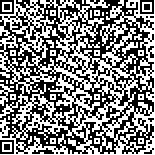| 摘要: |
| [摘要] 目的 探讨胰岛素强化治疗对糖尿病(DM)家兔脑细胞凋亡及炎症反应的影响。方法 将40只雄性实验家兔随机分为糖尿病多次胰岛素(Ins)治疗组(A组,n=8)、50R预混Ins治疗组(B组,n=8)、30R预混Ins治疗组(C组,n=8)、糖尿病未治疗组(D组,n=8)及正常对照组(N组,n=8),其中4组建立四氧嘧啶诱导的家兔糖尿病模型,治疗30 d后,记录3个治疗组的胰岛素剂量及达标时间,观察空腹血糖、体重、TNF-α、IL-6,用TUNEL标记染色观察大脑顶叶锥体细胞病理学变化和凋亡数量并行各组间进行比较。结果 B组的达标Ins用量(5.62±0.67)U/kg较A、C组少,C组达标时Ins用量最多(8.83±1.17)U/kg,差异有统计学意义(P<0.01)。A组达标时间最短(7.00±1.31)d、C组血糖达标时间最长(19.63±1.41)d,各组间存在统计学差异(P<0.001)。实验结束时,体重与血糖呈负相关(r=-0.559,P<0.001)。与D组相比,A、B、C组TUNEL阳性细胞数、TNF-α、IL-6显著减少(P<0.01);IL-6、TNF-α与血糖呈正相关(r=0.751、0.799,P<0.001)。未治组绝大多数神经元变性凋亡率(26.67±0.99)%,与各组比较存在统计学差异(P<0.001)。结论 糖尿病可导致脑炎症因子表达增加,促进脑细胞凋亡,胰岛素可减轻糖尿病兔脑细胞凋亡和炎性反应。三种胰岛素治疗方案中30R预混胰岛素方案是最佳的强化治疗方案。 |
| 关键词: 糖尿病家兔模型 HE染色法 TUNEL标记染色法 肿瘤坏死因子-α 白介素-6 |
| DOI:10.3969/j.issn.1674-3806.2010.08.08 |
| 分类号:R 587.1 |
| 基金项目: |
|
| Effect of insulin intensive therapy on the inflammatory factors and apoptosis in diabetic rabbit′s brain tissue |
|
ZHONG Mei,LI Ni,CHEN Hui,et al.
|
|
Department of Endocrinolog,the People′s Hospital of Guangxi Zhuang Autonomous Region,Nanning 530021,China
|
| Abstract: |
| [Abstract] Objective To study the effect of the insulin intensive therapy on the inflammatory factors and apoptosis in diabetic rabbit′s brain tissue.Methods Homemade rabbit diabetes mellitus models induced by alloxan were divided into 3 groups according to the different insulin infusion programs: A group received multiple subcutaneous injection of insulin, B group adopted isophane protamine biosynthetic human injection (pre-mixed 50R), C group received isophane protamine biosynthetic human injection (pre-mixed 30R).D group(untreated group) and N group(control groups). The therapy period was 30 days. The insulin dose and period at the targeted blood glucose level among 3 insulin groups were recorded.The blood glucose levels,body weight,TNF-α,IL-6,the rate of apoptosis of the pyramidal cells by dTdT mediated duTP rick end-labeling (TUNEL) and pathohistology change in the parietal lobe of the brain by hematoxylin-eosin dyeing (HE) were observed.The values inspected were compared to those of untreated group and control groups.Results Insulin dose(5.62±0.67)U/kg of B group is less than A group and C group. C group used the largest amount of insulin to get to the targeted blood glucose levels. There was significant difference among treated groups(P<0.01). the period was shortest in A group (7.00±1.31) days and longest in C group(19.63±1.41) days.There was significant difference among treated groups(P<0.001). At the end of the investigation, the body weight was negatively related to the blood glucose(r=- 0.559, P<0.01), IL-6 and TNF-α were positively related to the blood glucose (r=0.751、 0.799, P<0.001). The water content of the brain、 TNF-α were significant difference among treated groups(P<0.05). Most of the neurons were degenerate and apoptotic in untreated group, the rate of apoptosis was (26.67 ± 0.99)%, There was significant difference among 3 groups (P<0.01). Conclusion Diabetes mellitus can increase the expression of inflammatory cytokines in diabetic rabbit′s brain tissue and promote the pyramidal cells apoptosis. Intensive insulin therapy can relieve the apoptosis and inflammatory reaction in the diabetic rabbit′s brain. Subcutaneous injection of pre-mixed 30R may be the optimal insulin regimen. |
| Key words: Rabbit diabetes mellitus model HE staining TUNEL method TNF-α IL-6 |

